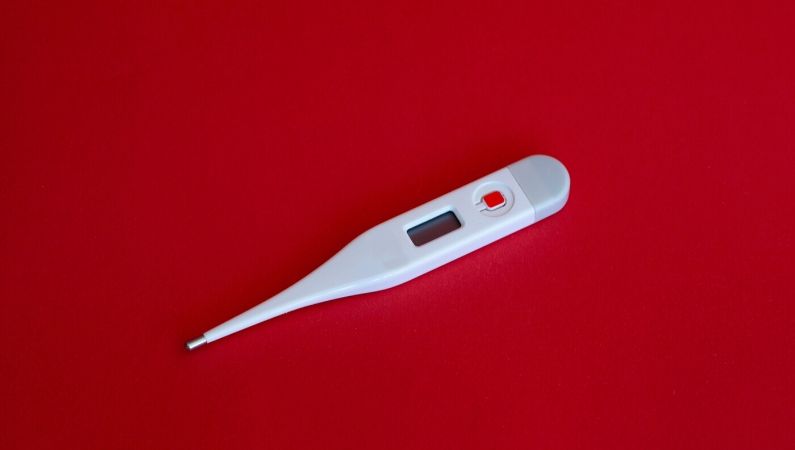Most employees will get sick at some point. It’s a fact of life. In 2020 alone, 118.6 million working days were lost because of sickness or injury in the UK, an average of 3.6 days per worker. And COVID-19 has accounted for 14.0% of all sickness absences since April 2020. As an employer, it is vital to be aware of all your obligations relating to time off and statutory sick pay (SSP). You need to know if (and when) your employees have the right to be paid, when sick pay kicks in, how much they are entitled to, and what happens when an employee’s SSP entitlement runs out.
It is also a good idea to track and monitor sick leave in your company to help you get a bigger picture of what’s going on with your workforce. You might uncover potential problem areas that you can address for the benefit of your employees and the business as a whole.
The first step is making sure you are clear on all the basics. This includes your obligations as an employer, and what to do when one of your employees takes sick leave.
- What is Statutory Sick Pay?
- How Much Is Statutory Sick Pay in the UK?
- Who Pays For Statutory Sick Pay?
- How Much Does SSP Cost An Employer?
- Who Can Claim Statutory Sick Pay?
- When Does Statutory Sick Pay Kick In?
- What Happens When Statutory Sick Pay Ends?
- ✅ Holiday & Absence Management Software
What is Statutory Sick Pay?
Statutory Sick Pay (SSP) is a government-mandated payment that certain employees are entitled to when they are too sick to work. SSP is the minimum legal requirement that you must pay your employees on part-time and fixed-term contracts that have been off work due to illness for a minimum of 4 working days (up to 28 weeks). As of March 13th 2020, SSP is also paid from the first qualifying day if an employee is self isolating due to COVID-19. Self-employed individuals are not entitled to SSP.
If your company has implemented its own company sick leave policy then you must make sure that any sick pay terms meet minimum SSP requirements. Failure to do so could result in one of your employees filing an HMRC Statutory Payment Dispute notice.
How Much Is Statutory Sick Pay in the UK?
Statutory sick pay in the UK can be paid for up to 28 weeks, starting from an employee’s fourth day of absence. This is commonly known as a sick leave entitlement. Employees only receive payment for ‘qualifying days’ (days they would have worked had they not been ill), and sick pay must be included in their regular payslip.
According to recent updates in the law, eligible employees are now entitled to a minimum of £96.35 sick pay per week. This amount might be higher if you offer an enhanced sick pay scheme, but it must never fall below the minimum statutory sick pay rate. You can use this handy government Statutory Sick Pay Calculator to work out exactly how much your employees are entitled to.
Most companies these days opt for their own enhanced sick pay policy. They also offer a higher rate of sick pay to their employees. This is because most companies are now aware that the health and wellbeing of their employees has a direct impact on their business. Employees are a company’s most important asset, after all. Plus, offering perks such as an enhanced sick pay policy can help you attract and retain top talent. Something worth considering as an employer.

Who Pays For Statutory Sick Pay?
According to the Statutory Sick Pay (General) Regulations 1982, SSP is paid by the employer. You should include all SSP payments in an employee’s regular weekly or monthly payslip. You also need to make sure you deduct the necessary tax and national insurance contributions.
The only exceptions where you are not obliged to pay SSP are if an employee:
- Has been off sick for three days or less (unless related to Covid-19, more on this below).
- Has already exceeded their 28-week SSP allowance.
- Is already receiving Statutory Maternity Pay, or is off work for a pregnancy-related illness in the 4 weeks prior to their due date.
- Is working outside the EU and you are not liable for their National Insurance contributions.
- Has received Employment and Support Allowance within 12 weeks of starting or returning to work for you.
- Did not notify you of their absence in line with your internal procedures for absences.
- Has failed to supply you with evidence of their illness (self-certification for absences of less than 7 days, or a doctor’s fit note for absences over 7 days).
- Earns less than £120 per week.
How Much Does SSP Cost An Employer?
All employers must pay Statutory Sick Pay. If an employee is sick for 4 working days or more and they are eligible for SSP then you must pay them a minimum of £96.35 SSP per week until they return to work, for a maximum of 28 weeks.
Previously, you could recover some SSP costs if you paid a certain amount out in a month under the Percentage Threshold Scheme. However, the scheme was scrapped in 2014 and funding was diverted into schemes that help employees on long-term sick leave return to work quicker.
There is an exception to this rule if an employee’s absence is directly related to COVID-19. In this case, you can reclaim up to 2 weeks’ SSP if all of the following apply:
- The employee in question is off work because they have COVID-19 or they are self-isolating.
- The employee is shielding.
- Your PAYE payroll scheme started on or before 28 February 2020
- You had fewer than 250 employees on 28 February 2020
If all the above apply then you could potentially reclaim up to £96.35 a week for each employee. You cannot, however, reclaim SSP if an employee is off sick for any other reason other than COVID-19. Find out if you are eligible for an SSP rebate here.
Who Can Claim Statutory Sick Pay?
Any part-time or fixed-time contracted employee can claim statutory sick pay, provided they meet government requirements.
First and foremost, in order to qualify for SSP, an employee must be able to demonstrate that they are ill. Employees can self-certify an illness for up to seven days. Any sick leave that lasts longer than a week must be backed up with a doctor’s sick note.
Secondly, employees must follow all your established internal procedures. This includes reporting their absence through the right channels, in a timely manner. Make sure your employees and managers are aware of all policies and procedures relating to sickness and time off. This will also make it easier for your HR department to calculate payroll when an employee is sick.
Finally, an employee’s right to claim statutory sick pay will depend whether they are deemed eligible by law. An employee is eligible for statutory sick pay UK if they:
- Are classed as a part-term or fixed-term employee
- Earn a minimum of £120 a week, before tax.
- Have been off sick for at least 4 days in a row, including non-working days.
- Are isolating due to COVID-19.
When Does Statutory Sick Pay Kick In?
It is important to remember that SSP only kicks on the fourth day of an employee’s absence. This is known as the first “qualifying” day. The first 3 days of sick leave are known as “waiting days“. You only get paid for waiting days if you’ve already received SSP within the last 8 weeks, and that included a 3-day waiting period.
If an employee is sick for 3 days or less then you are not legally obligated to pay for their absence. However, most companies offer contracted employees sick pay from day 1 these days. If this is the case then you must make sure that all terms are detailed clearly in your employment policies.
The only exception to this is if an absence is directly related to COVID-19. In this case, an employee is entitled to statutory sick pay from the first day of their absence. In other words, day 1 is classed as their first “qualifying” day. However, an employee must be able to prove that they self-isolated for at least 4 days.
What Happens When SSP Ends?
If an employee has taken long-term sick leave and they have reached the 28-week limit for statutory sick pay, then there are a number of options that your employees might want to consider, especially if your company doesn’t offer extended sick pay.
First things first, you can encourage your employees to apply for Employment and Support Allowance or Universal Credit (ESA). You will need to send an SSP1 form to your employee for this. You need to send this form at least 7 days before their SSP entitlement ends (unless they are returning to work). It’s a good idea to get things moving much sooner though as applications for ESA can take a while. At least 3 months before SSP expiry is a good idea.
Finally, it is important to remember that even when an employee’s SSP entitlement runs out, there is still an employment contract between both parties. This means that the employee should continue to keep you updated on their sickness and estimated return to work. Keep lines of communication open, and make sure you are clear about all requirements of your sickness policy and procedures. This will help you avoid any confusion or potential disputes.
Written by Cat Symonds; Edited by Julia Hoyas




